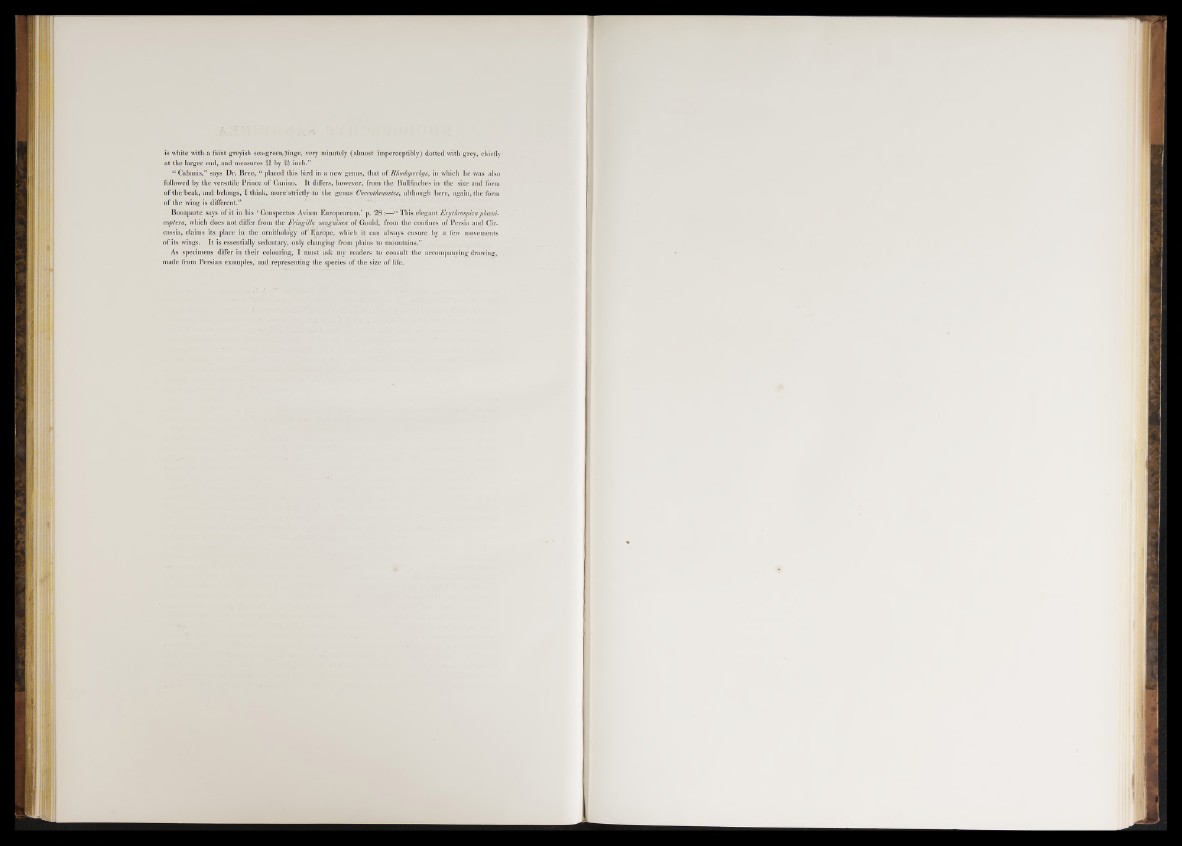
is white with a faint greyish sea-green?tinge, very minutely (.almost imperceptibly) dotted with grey, chiefly
a t the larger end, and measures i t by I t inch.”
“ Cabanis,” says Dr. Bree, “ placed this bird in a new genus, that of Rhodopechys, in which he was also
followed by the versatile Prince of Canino. I t differs, however, from the Bullfinches in the size and form
of thb'beakj and belongs, I think, more'strictly to the genus Coecothraustes, although here, again, the form
of the wing is different.”
Bonaparte says of it in his ‘ Conspectus Avium Europeardm,’ p. 28 “ This elegant Erythrospizaphomicoptera,
which does not differ from the Fringilla sanguinea of Gould, from the confiues of Persia and Circassia,
claims its place in the ornithology o f E;u,rope, which it, can always ensure by a few movements
o f its wings. I t is essentially sedentary, only changing from plains to mountains.”
As specimens differ in their colouring, I must ask my readers to consult the accompanying drawing,
made from Persian examples, and representing the species of the size of life.